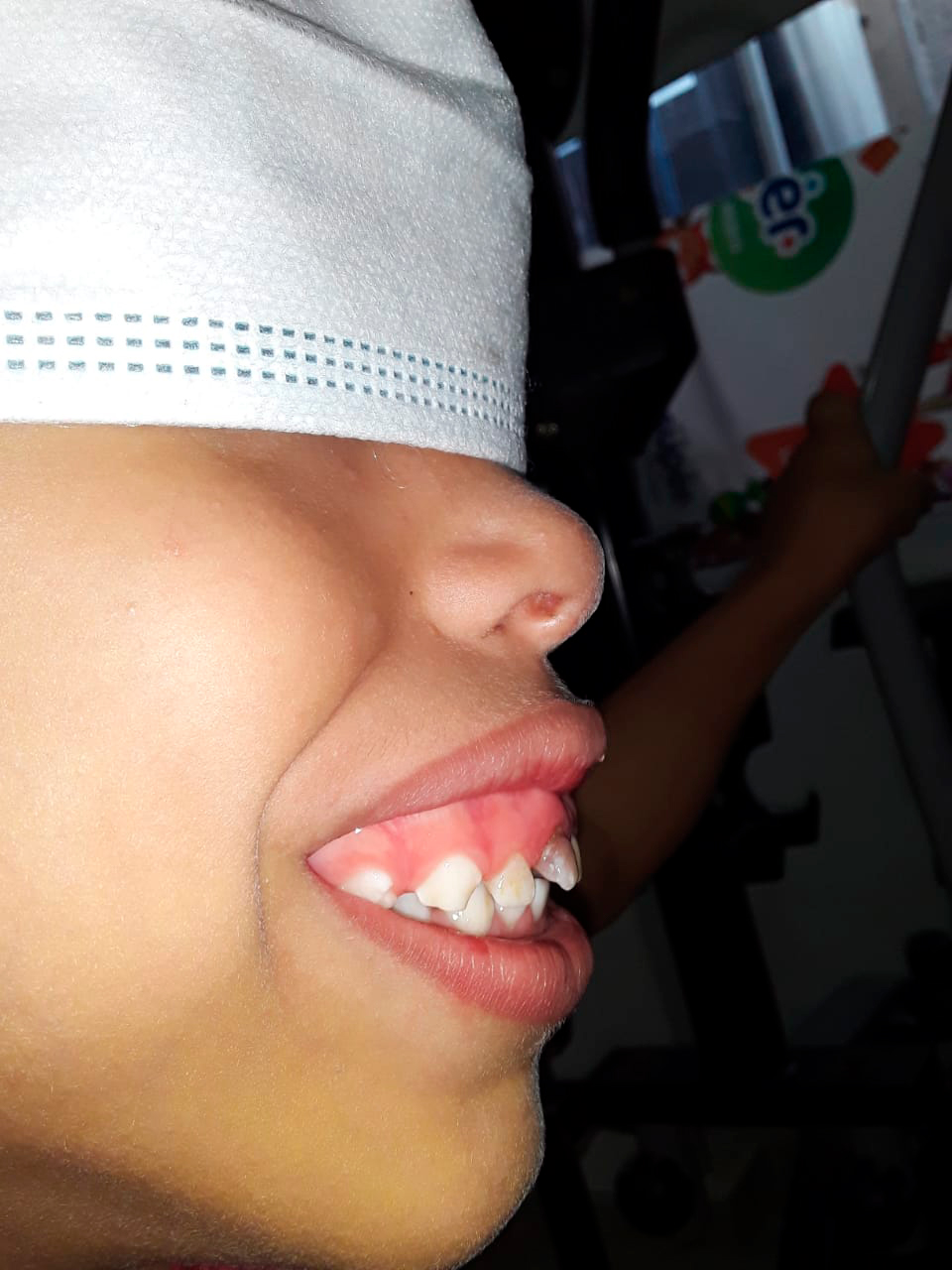Sotos syndrome: a look at cerebral gigantism. Case report.
Main Article Content
Abstract
Background: Sotos syndrome is also known as cerebral gigantism. It is one of the most frequent overgrowth syndromes. Macrocephaly and tall stature are typical characteristics of these children. It is characterized by a distinctive facial appearance (broad and prominent forehead with a dolichocephalic shape, sparse frontotemporal hair, among others), learning disabilities, and body overgrowth. Treatment is aimed at promoting neurological development. Clinical case: we present the case of a preschooler who, in the infant stage, showed an increased head circumference and poor progress in neurodevelopment, with dolichocephaly, bulging forehead, narrow fissures, hypoplastic spine, nostrils pointing upwards, intact palate, posteriorly rotated pinnae, and significant lumbar kyphosis. The molecular test identified a heterozygous variant, missense type: c.5165G>C; p.Cys1722Ser in the NSD1 gene. The patient receives multidisciplinary support with progress in neurodevelopment. Conclusion: Despite its worldwide distribution, Sotos syndrome may not be reported. In addition to its characteristic clinical picture, molecular genetic testing is highly recommended for diagnosis.
Downloads
Article Details

This work is licensed under a Creative Commons Attribution-NonCommercial-NoDerivatives 4.0 International License.
Creative Commons
License Attribution-NonCommercial-ShareAlike 4.0 International (CC BY-NC-SA 4.0)
You are free to:
Share - copy and redistribute the material in any medium or format.
Adapt - remix, transform, and build upon the material The licensor cannot revoke these freedoms as long as you follow the license terms.
• Attribution — You must give appropriate credit, provide a link to the license, and indicate if changes were made. You may do so in any reasonable manner, but not in any way that suggests the licensor endorses you or your use.
• NonCommercial — You may not use the material for commercial purposes.
• ShareAlike — If you remix, transform, or build upon the material, you must distribute your contributions under the same license as the original.
• No additional restrictions — You may not apply legal terms or technological measures that legally restrict others from doing anything the license permits.
References
Caino, D., Moresco, A., Breitman, F., Fano, V. Crecimiento en niños con síndrome de Sotos. Medicina Infantil. 2013;20(2):117-121.
DISCAPNET. (15 de Feb de 2018). DISCAPNET. Disponible en: El portal de las personas con discapacidad: https://www.discapnet.es/areas-tematicas/salud/enfermedades/enfermedades-discapacitantes/sindrome-de-sotos#:~:text=El%20s%C3%ADndrome%20de%20Sotos%2C%20tambi%C3%A9n,desarrollo%20motor%2C%20cognitivo%20y%20social.
Faravelli, F. Mutaciones NSD1 en el síndrome de Sotos. Am J Med Genet C Semin Med Genet. 2005;137(1):24-31. DOI: https://doi.org/10.1002/ajmg.c.30061
Kamal, N., Althobiti, J., Alsaedi, A., Bakkar, A., Alkaabi, T. Síndrome de Sotos. Medicina. 2018; 97(47). DOI: https://doi.org/10.1097/MD.0000000000012867
Lane, C., Milne, E., Freeth, M. Cognition and Behaviour in Sotos Syndrome. Plos One, 2016;11(2): e0149189. DOI: https://doi.org/10.1371/journal.pone.0149189
Lapunzina, P. Síndrome de Sotos. Protoc diagn ter pediatr, 2010;(1):71-79.
Madi, M., Babu, S., Shetty, S., Madiyal, A., Achalli, S., Bhat, S. Síndrome de Sotos. Applied Medical Research. 2016;2(3):63-67. DOI: https://doi.org/10.5455/amr.20161127090558
Tatton-Brown, K., Cole, T., & Rahman, N. (2019). Sotos Syndrome. GeneReviews. Obtenido de https://www.ncbi.nlm.nih.gov/books/NBK1479/





